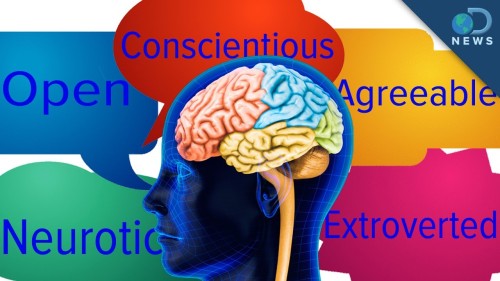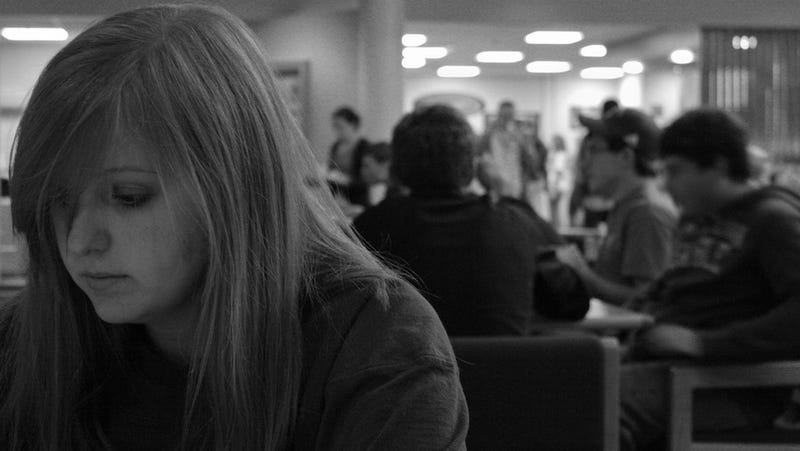Most people are aware of these personality trait distinctions which typically separates people according to their prevalence for time alone (introverted), or time with others (extroverted). Whilst these traits were popularised by psycho-analyst Carl Jung in 1931, they are most widely understood in relation to the Big Five, or Five Factor, Model (1980s). This model asserts that various levels of the five factors when combined together form your personality type. The Five Factors are: openness (to experience), conscientiousness, extraversion, agreeableness, and neuroticism (OCEAN).


But back to introversion and extraversion. Extraversion is defined as preference towards outgoing, talktative, enthusiastic, energetic, assertive, and specifically social, behaviour. Introversion on the other hand is defined as a preference for more solitary and reserved behaviour. Introverts are also considered to prefer to focus on one activity at a time, and become overwhelmed from too much (social) stimulation. The two traits are usually considered as existing on a scale, meaning that being high in one set of traits means you are low in the other. However this is not how Jung, or the Myers-Briggs Indicator understands the traits. They instead argue that everyone has both an extroverted and introverted part of their personality, with one merely being more active – or dominant – than the other. It is also worth noting that Ambiversion (a relative balance between the two extremes) is another recognised personality trait.
However you define or analyse them, these traits (along with the other four from the Big Five) are a very interesting aspect of personality, and human behaviour, studies. They no doubt have their merits within the discipline, and it is obvious that – of all the Big Five traits – everyday people find it easy to identify with one or the other of these two extremes. Many people identify themselves as one or the other, and also recognise these traits in their friends and acquaintances. My problem, however, is that the plethora of articles on a broad range of websites encourages people to treat these personality traits as something very closely akin to mental health issues. This is particularly true of introversion more than extroversion.
A quick Google of “Introversion” gives me the following hits:
Caring for your Introvert – The Atlantic
7 things every clinician should know about Introversion – Social Worker Helper
5 signs your child might be an introvert – Daily Mom
23 Signs You’re Secretly an Introvert – Huffington Post
When Schools overlook Introverts – why quiet time is important for children – The Atlantic
10 reasons why Introverts are Incredibly Attractive People – Lifehack
The Power of Introverts – TED
How to Shine as an Introvert – Activebeat
10 Life Changing Books for Introverts – Book Riot
Worse, are the images you often see on articles like this, which wouldn’t be uncommon in articles about depression, bullying or mental health articles:


These websites and articles all treat Introversion as if it is a special trait of sensitive people that need help with engaging in society, or need their rights to be solitary recognised by society. The same could be true of extroverts – that they need to be careful of their magnanimity and charisma, or tone down their personality in order to make other people more comfortable. This obsession with identifying, labelling, and associating people distinctly with one of these two traits and then fighting for their recognition and acceptance in society, to me, echoes the ways in which Mental Health issues raise awareness and tolerance throughout the media.
Introversion is NOT the same as Anxiety Disorder, it is not even the same thing as shyness. Shy people find it difficult to be in social situations, many people with Anxiety Disorder develop severe physical and psychological symptoms from being exposed to (among other things) situations in which feel they cannot control, sometimes these are social situations, sometimes they are not. People who tend toward introversion do not need to be molly-coddled or helped into social situations with tips and tricks. There is nothing wrong with them. Similarly extroversion is not the same thing as the manic episodes experienced by people with Bi-Polar Disorder, nor is it Narcissistic Personality Disorder. That is not to say that people with Social Anxiety Disorder do not have introversion traits. I am saying that these traits are NOT the condition.
These people have genuine and often sever problems which they struggle with every single day. To imagine your introversion as existing on anything like the same level as Social Anxiety Disorder does a huge disservice to those people with genuine conditions. Just because you prefer your own company and find social gatherings taxing, exhausting, or boring does not mean you have Anxiety Disorder or Depression. A personality TRAIT is not the same thing as a MENTAL HEALTH DISORDER. So can we please stop treating introversion (and extroversion) as conditions that need our understanding or sympathy, and start treating them as what they are: theoretical personality traits which help psychologists identify people along a spectrum along with four other equally important measures when studying human behaviour.
Very timely article, as a teacher I struggle during parents’ evenings to convince them that there child isn’t deficient just because they may fall in the category of ‘shy’ (darent say the word introvert, that’s REALLY negative) they always ask what they can do to ‘change that’.as an introvert myself, totally happy with who I am, apart from well meaning people concerned with getting me to be more sociable, who loves my own company, that of close, interesting and trusted friends, and meeting others in bite sized portions, as well as books and thinking time, I get cross that extroverts are deemed to be the healthy , successful and desirable members of society